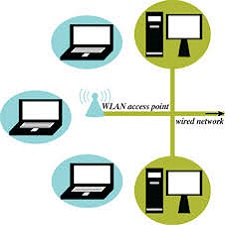توضیحات
چکیده
ترجمه ماشینی آماری به عنوان یکی از بهترین روش ها برای ترجمه از یک زبان به زبان دیگر شناخته میشود. برای زبان هایی که از لحاظ ساختار دارای شباهت زیادی به یکدیگر هستند خروجی این مترجم بسیار مناسب میباشد. تفاوت های ساختاری میان زبان انگلیسی و فارسی و همچنین عدم وجود پیکره دوزبانه بزرگ باعث شده است که این روش برای زبان ترجمه انگلیسی به فارسی ترجمه های مطلوبی را تولید نکند. ما در این مقاله سعی كرده ایم با استفاده از رهیافت بازآرایی کلمات، تا حد ممکن شباهت ساختاری میان عبارت انگلیسی و فارسی را افزایش دهید. در ادامه تاثیر این عمل را بر روی بهبود نتایج خروجی مورد بررسی قرار داده ایم. به همین منظور ابتدا با كمك درخت تجزیه، مجموعه ای از قوانین بازآرایی استخراج شده است. سپس این قوانین به عنوان یك عمل پیش پردازشی برروی عبارات انگلیسی اعمال گردیده است. نتایج بررسی ها نشان میدهد كه خروجی مترجم پس از اعمال این روش منجر به بهبود كیفیت ترجمه در معیار BLEUشده است.
مقدمه
ترجمه ماشینی به معنای استفاده از کامپیوتر برای ترجمه از یک زبان به زبان دیگر به صورت خودكار میباشد.تفاوت ذاتی میان برخی از زبان ها كار ترجمه را بسیار مشکل میسازد. روش های سنتی برای ترجمه ماشینی، برروی اطلاعات زبان شناختی بشر، بصورت قوانین تبدیل متن از زبانی به زبان دیگر تکیه داشت. با توجه به وسعت دامنه اطلاعات موجود در زبان ها، استفاده از این روش ها، بسیار پیچیده و نیازمند دانش بسیار میباشد. ترجمه ماشینی آماری، یک رویکرد متفاوت است که سعی دارد بطور خودکار از روی حجم زیادی از داده های آموزشی، به دانش گفته شده در ترجمه، دست پیدا كند. این دانشکه عموما بصورت احتمالاتی مبتنی بر قابلیت های گوناگون زبانی میباشد به منظور راهنمایی در فرایند ترجمه مورد استفاده قرار میگیرد.
ABSTRACT
Statistical machine translation is recognized as one of the best practices for translating from one language to another. For languages that are similar in structure, the output of this translator is very suitable. Structural differences between English and Persian, as well as the absence of a large bilingual entity have caused this method not to produce acceptable translations for the English-Persian language. In this article, we have tried to maximize the structural similarity between the English and Persian phrases by using the word repositioning approach. We further examine the effect of this action on improving the output results. For this purpose, a set of reorganization rules has been extracted first with the help of the decomposition tree. Then these rules are applied as a preprocessor on English terms. The results of the studies show that the translator’s output after applying this method has improved the quality of translation on the BLEU benchmark.
INTRODUCTION
A machine translation means the use of computers for translation from one language to another automatically. The inherent difference between some languages makes translation difficult. Traditional methods for machine translation, based on human language linguistic information, relied on rules for converting text from one language to another. Given the breadth of information available in languages, the use of these methods is very complex and requires much knowledge. The statistical machine translation is a different approach that tries to automatically obtain from the large amount of educational data the knowledge reported in the translation. This knowledge Which is generally based on probabilities based on various linguistic capabilities and is used to guide the translation process.
Year: 2012
Publisher : The first international conference on Persian language and language processing
By : Reza Saeedi, Mohsen Kahani, Seyyed Ahmad Jackini Tusi and Behdad Behmdidi Holy
File Information: Persian Language/ 5 Page / size: 554 KB
Only site members can download free of charge after registering and adding to the cart
سال : 1391
ناشر : نخستین کنفرانس بین المللی پردازش خط و زبان فارسی
کاری از : رضا سعیدی ،محسن کاهانی ،سیداحمد جکیان طوسی و بهداد بهمدی مقدس
اطلاعات فایل : زبان فارسی / 5 صفحه / حجم : KB 554








![Portfolio optimization problem with default risk[taliem.ir]](https://taliem.ir/wp-content/uploads/Portfolio-optimization-problem-with-default-risktaliem.ir_-150x150.jpg)
نقد و بررسیها
هنوز بررسیای ثبت نشده است.